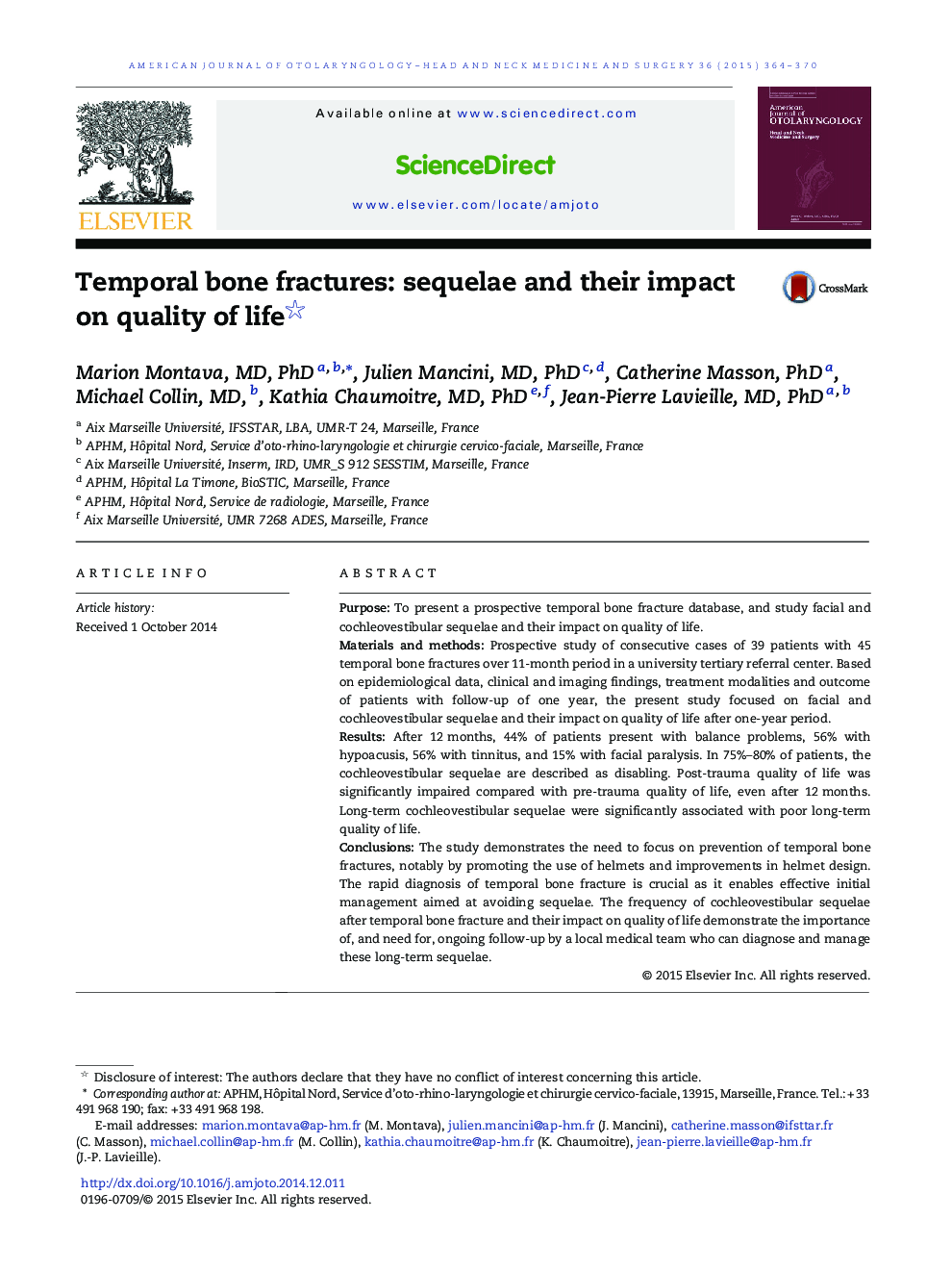| Article ID | Journal | Published Year | Pages | File Type |
|---|---|---|---|---|
| 4103537 | American Journal of Otolaryngology | 2015 | 7 Pages |
PurposeTo present a prospective temporal bone fracture database, and study facial and cochleovestibular sequelae and their impact on quality of life.Materials and methodsProspective study of consecutive cases of 39 patients with 45 temporal bone fractures over 11-month period in a university tertiary referral center. Based on epidemiological data, clinical and imaging findings, treatment modalities and outcome of patients with follow-up of one year, the present study focused on facial and cochleovestibular sequelae and their impact on quality of life after one-year period.ResultsAfter 12 months, 44% of patients present with balance problems, 56% with hypoacusis, 56% with tinnitus, and 15% with facial paralysis. In 75%–80% of patients, the cochleovestibular sequelae are described as disabling. Post-trauma quality of life was significantly impaired compared with pre-trauma quality of life, even after 12 months. Long-term cochleovestibular sequelae were significantly associated with poor long-term quality of life.ConclusionsThe study demonstrates the need to focus on prevention of temporal bone fractures, notably by promoting the use of helmets and improvements in helmet design. The rapid diagnosis of temporal bone fracture is crucial as it enables effective initial management aimed at avoiding sequelae. The frequency of cochleovestibular sequelae after temporal bone fracture and their impact on quality of life demonstrate the importance of, and need for, ongoing follow-up by a local medical team who can diagnose and manage these long-term sequelae.
